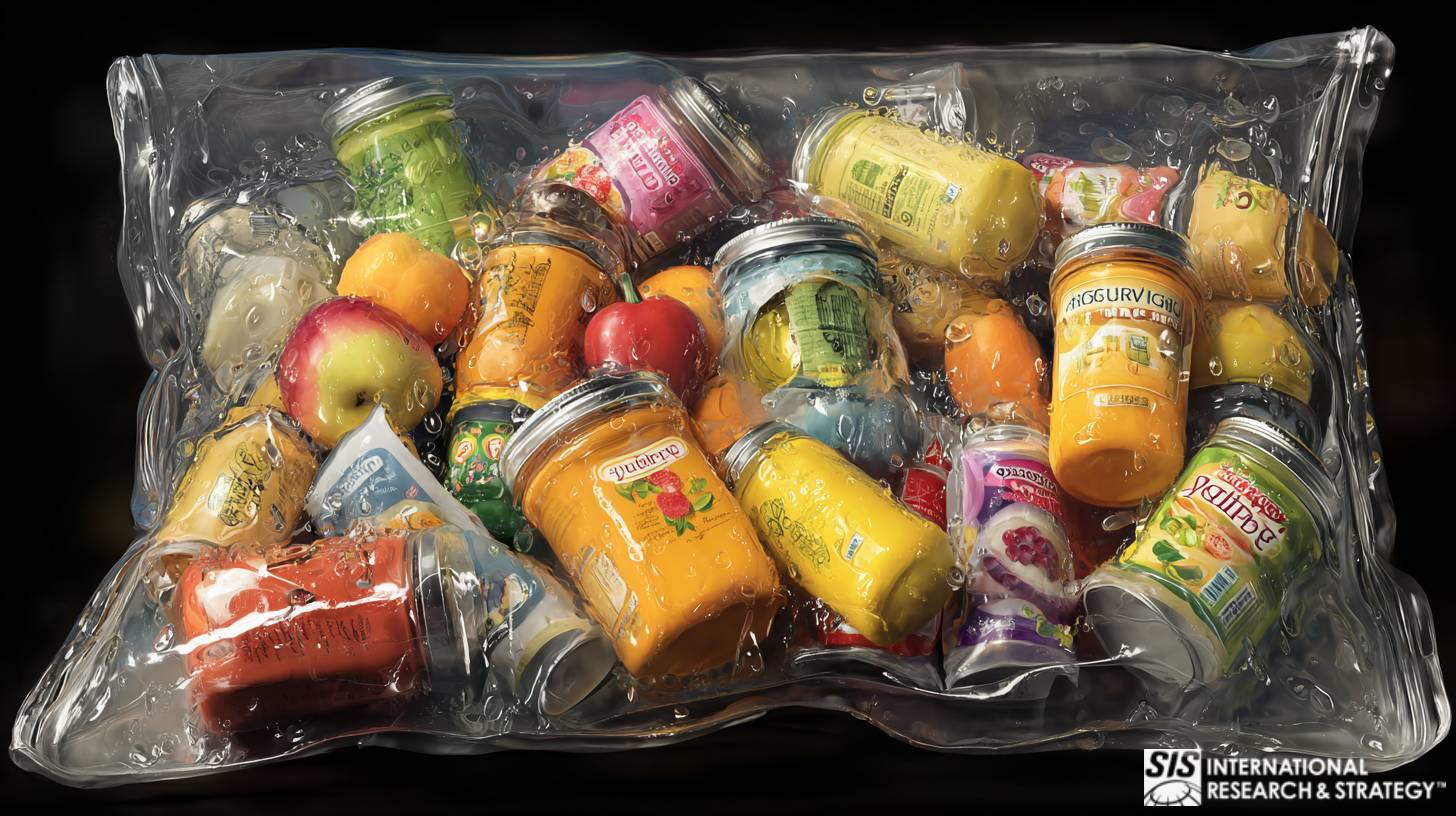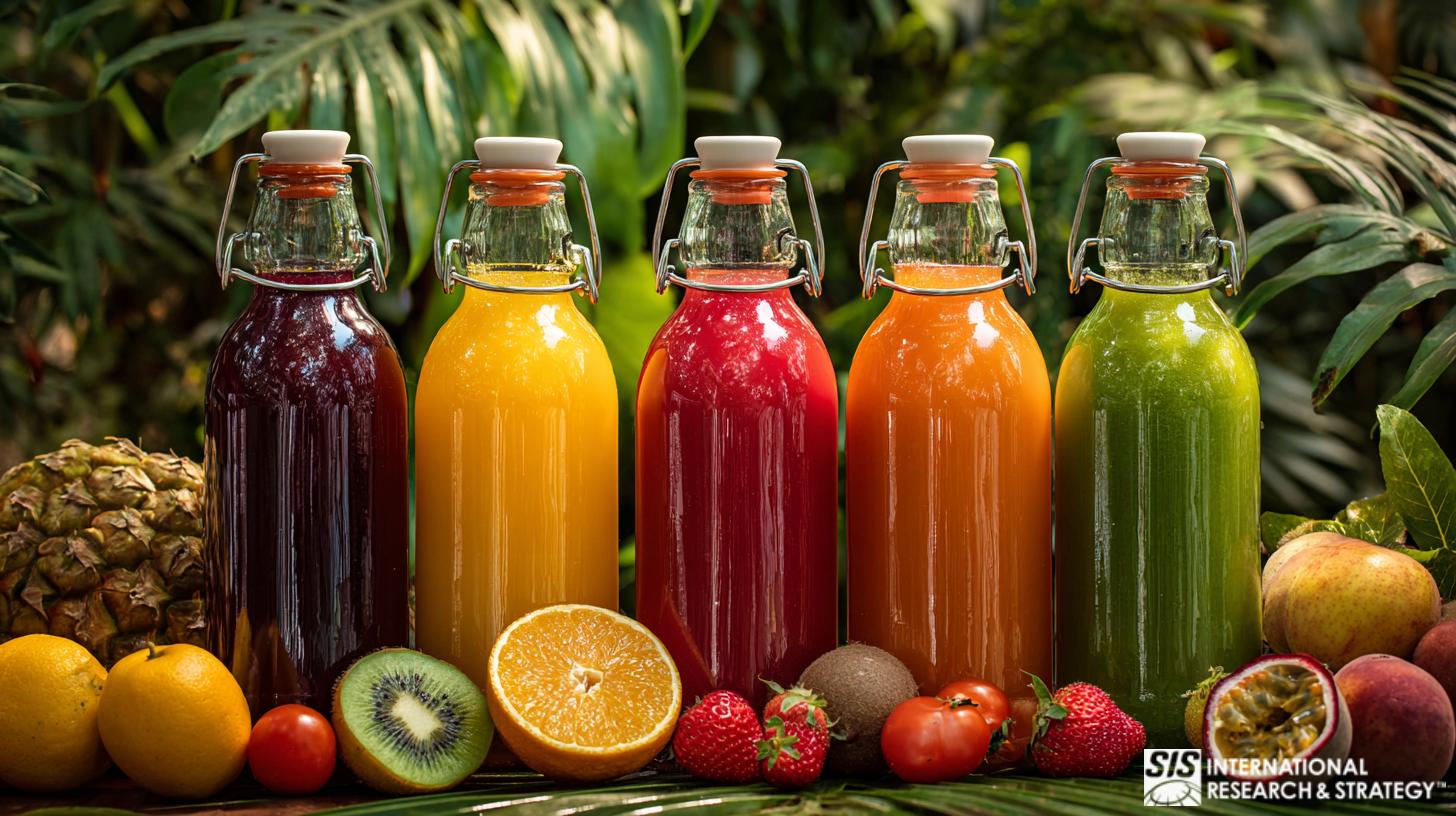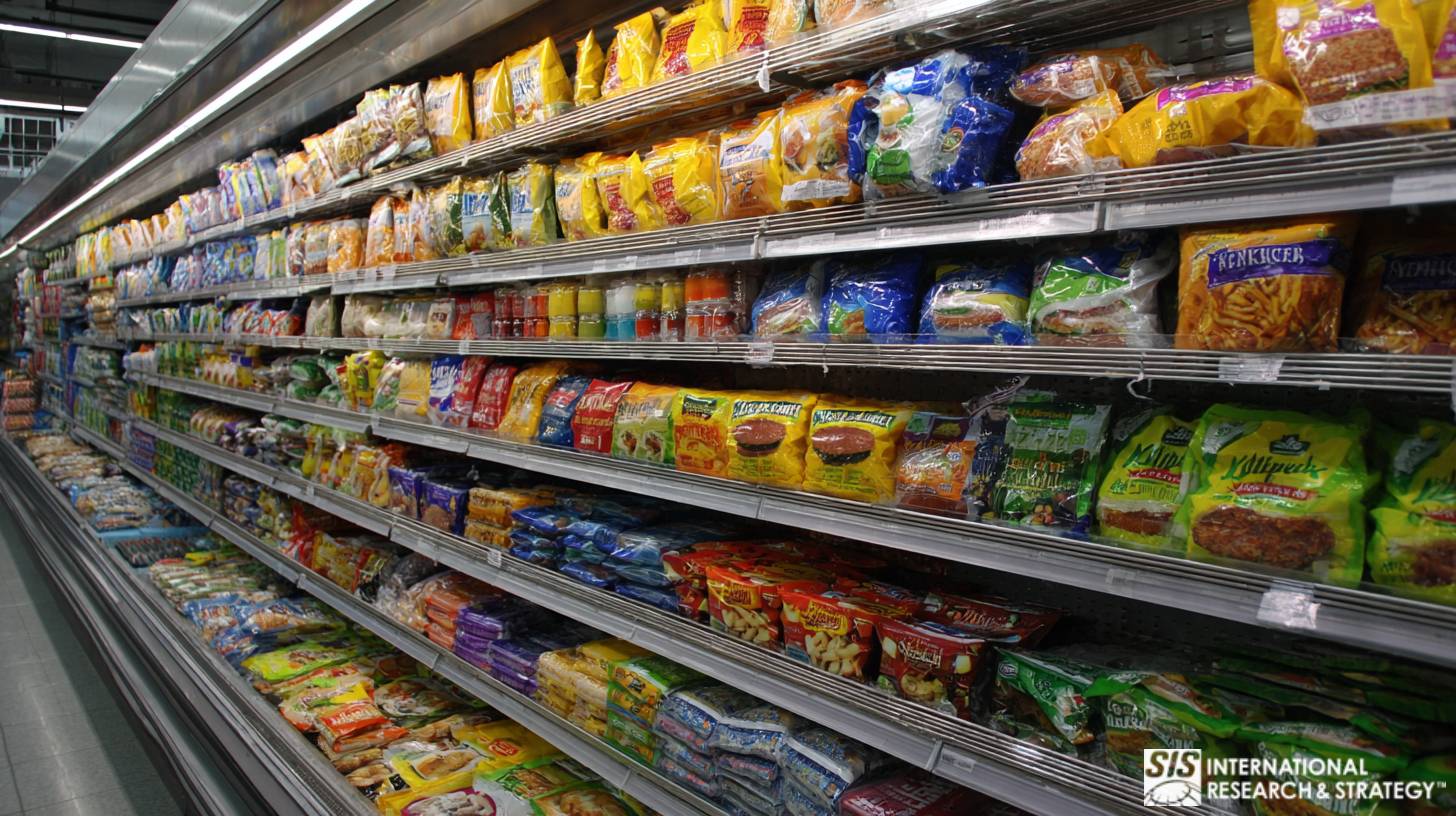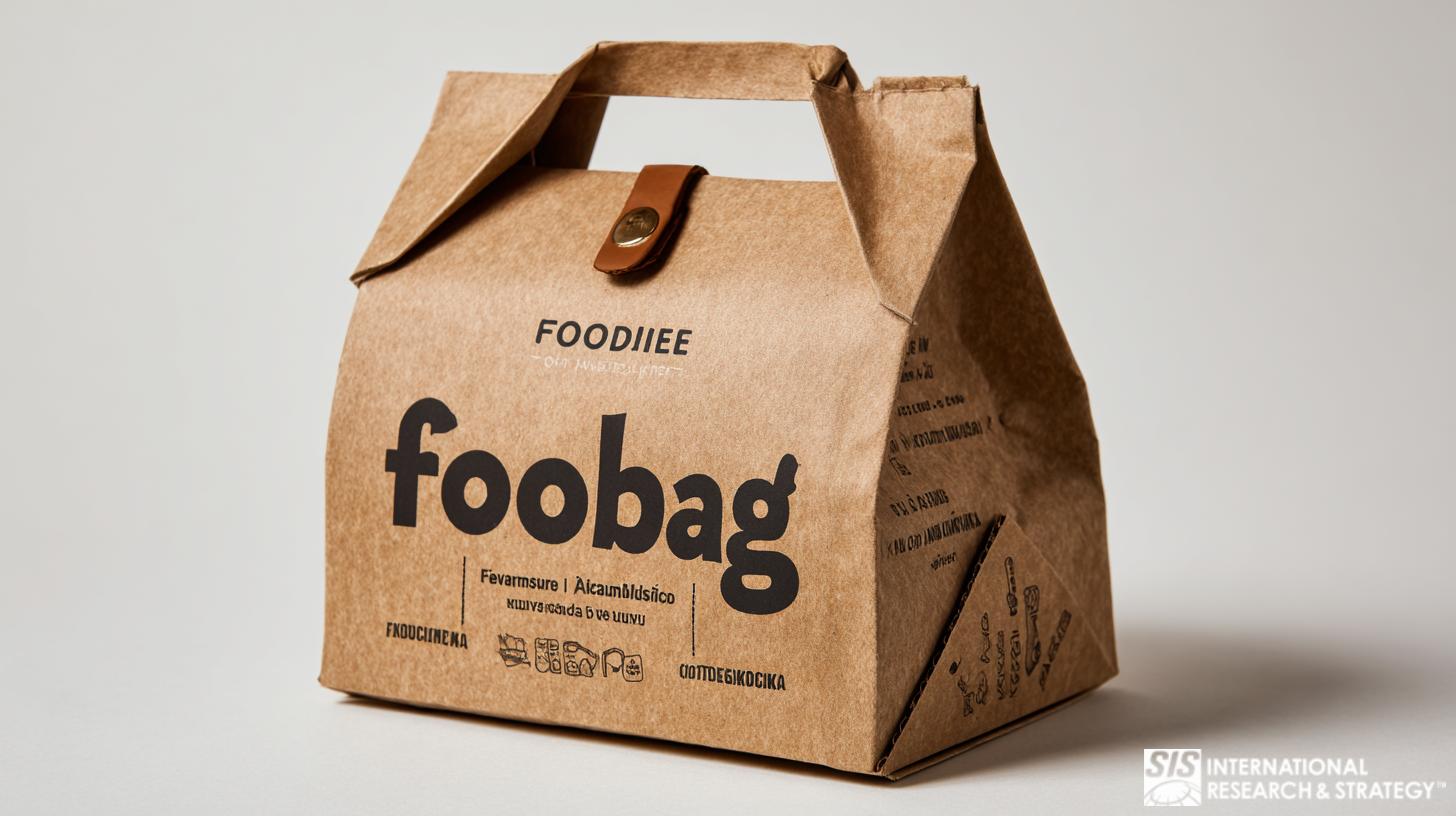Onderzoek naar consumptiegoederen

Some people obsess about the products they buy, sometimes unaware that it was the packaging that tipped the scales in their decision to purchase – and that’s why the best packaging firms (and the ones that intend to be) consult regularly with SIS International Research for expert consumer packaged goods research.
What Is Consumer Packaged Goods Research?
Consumer packaged goods (CPG) research is essential for businesses in this sector to stay competitive, innovative, and aligned with consumer needs and preferences. It provides crucial insights into consumer behavior, market trends, emerging technologies, and competitive strategies.
… And our unparalleled primary and secondary market research teams can provide the insight to make tactical decision-making easier. With accurate data and market analysis, each link in the supply chain is strengthened. Our competitive intelligence services open windows into the winning ways of business adversaries, while our knowledge of international markets and people bridges difficult cultural divides.
Understanding Consumer Packaged Goods Research
Consumer packaged goods research studies products that consumers use and replace frequently. This research is fundamental as it provides insights into consumer preferences, buying habits, market trends, and competitive landscapes.
- The primary focus of consumer packaged goods research is understanding the consumer’s interaction with these products. This includes studying how consumers discover, choose, use, and dispose of these goods.
- Various research methods are employed in consumer packaged goods research, including quantitative methods like surveys and experiments, and qualitative methods like focus groups and in-depth interviews.
- This research also involves analyzing market trends. It helps businesses stay informed about the latest market developments, consumer preferences, and emerging trends.
- Another critical aspect of consumer packaged goods research is competitive analysis. This involves studying competitors’ products, marketing strategies, and market performance.
Why is Consumer Packaging So Critical?

Verpakking is een essentiële marketingtactiek. Bedrijven gebruiken verpakkingen om koopwaar te verfraaien en zo de consument te verleiden. Het maken van aantrekkelijke en overtuigende verpakkingen intrigeert kopers die voor het eerst kopen.
Many companies conduct extensive research on designs and color schemes for product packaging. These companies need to know the types of packaging most attractive to the intended consumer. Why do they go to such lengths? Product packaging is often what entices the consumer to take a look at the product.
Marketers need to look at the quality of materials. They also need to look at shipping methods to get value for their money. Another consideration is brand reinforcement. The design features used on a company’s packaging are a principal part of its brand identity. It uses packaging to communicate that identity to its target audience. Ease of use is another critical factor. A package that is easy for consumers to carry, use, or store will perform better than one that is hard to manage.
So… What Are the Benefits of Consumer Packaged Goods Research?

Consumer packaged goods research offers several benefits to businesses in this sector. These benefits are crucial in guiding companies through the complexities of the market and enabling them to make informed strategic decisions.
• Enhanced Understanding of Consumer Needs and Preferences: Het helps businesses grasp what drives consumer choices, their lifestyle habits, and how these factors influence their purchasing decisions.
• Geïnformeerde productontwikkeling: Consumer packaged goods research can reveal gaps in the market, emerging trends, and consumer feedback on existing products, guiding businesses in developing new products or improving existing ones to better suit consumer needs.
• Concurrentievoordeel: By understanding the market and consumer behaviors better, businesses can develop unique strategies that set them apart from competitors. This could involve innovative product designs, targeted marketing campaigns, or unique selling propositions based on deep consumer insights.
• Better Forecasting and Trend Prediction: Another significant benefit is the ability to forecast market trends and consumer behaviors. This predictive aspect of consumer packaged goods research allows businesses to stay ahead of the curve, preparing for future changes in the market and adjusting their strategies accordingly.
• Cost-Effective Business Decisions: Consumer packaged goods research supports cost-effective decision-making. Providing a clear understanding of the market helps businesses allocate resources more efficiently, avoiding investments in unprofitable areas and focusing on strategies that yield the highest return on investment.
Marktonderzoeksmethoden
Effective Research Methods to gain insights into Consumer Packaged Goods include:
- Focusgroepen
- Consumer Interviews
- Etnografie
- Online gemeenschappen
- Enquêtes
- Store Audits
- Online gemeenschappen
- Zintuiglijk onderzoek
- Eye Tracking
Key Players in the Consumer Packaged Goods Market
The consumer packaged goods market is competitive, with several key players leading the industry. These companies have established themselves through innovative product offerings, strong brand identities, and extensive market reach. Let’s explore some of the notable brands in this sector.
• Procter & Gamble: Procter & Gamble (P&G) is a powerhouse in this industry. With a vast portfolio of brands across various categories such as laundry detergents, diapers, and personal care products, P&G has established a strong global presence.
• Unilever: Unilever is another major player known for its extensive range of products, including food and beverages, cleaning agents, and personal care products. With popular brands like Dove, Lipton, and Axe, Unilever significantly impacts consumer preferences and market trends worldwide.
• Nestlé: Nestlé, primarily recognized for its food and beverage products, is a leading name in the CPG market. With brands like Nescafé, KitKat, and Maggi, Nestlé has a diverse product range caters to various consumer needs and tastes globally.
• PepsiCo: PepsiCo is not just about beverages; it’s also a significant player in the snack food sector. With brands like Pepsi, Lay’s, and Quaker, PepsiCo has a strong market presence and is known for its innovative marketing strategies and product development.
• Johnson & Johnson: Johnson & Johnson is a prominent name, especially in the CPG market’s healthcare and personal care segments. With products ranging from baby care to medical devices, brands like Neutrogena, Band-Aid, and Tylenol have cemented their place in consumers’ daily lives.
• Coca-Cola Company: The Coca-Cola Company, while famous for its flagship Coca-Cola beverage, offers a wide range of soft drinks, water, and juice products. It’s a dominant player in the beverage sector of the CPG market, known for its iconic branding and global reach.
• Kellogg’s: Kellogg’s is a key player in the breakfast cereal and snack food market. With brands like Corn Flakes, Frosted Flakes, and Pringles, Kellogg’s has a strong market presence and is known for its commitment to nutrition and quality.
• Colgate-Palmolive: Colgate-Palmolive stands out in the personal care and household cleaning market. With its flagship brand Colgate leading the oral care segment and other brands like Palmolive and Ajax, the company significantly influences daily consumer routines.
When to Conduct Consumer Packaged Goods Research
Determining the right time to conduct consumer packaged goods research is crucial for businesses seeking to stay ahead in a competitive market. This onderzoek should be an ongoing process, but there are specific instances where its importance is critical.
• During Brand Re-positioning: When a company considers re-positioning its brand, consumer packaged goods research is essential. This research can help understand how the brand is currently perceived, identify the desired brand position, and develop strategies to bridge this gap.
• After Witnessing a Decline in Sales: If a business experiences a decline in sales or market share, it’s crucial to conduct consumer packaged goods research to understand the underlying causes. This research can reveal whether the decline is due to changing consumer preferences, increased competition, or other factors.
• When Exploring New Markets: Exploring new markets or demographics is another instance where consumer packaged goods research is vital. This research can provide insights into the viability of the new market, consumer needs, and how to effectively reach and appeal to this new audience.
• For Continuous Product Improvement: Ongoing consumer packaged goods research is essential for continuous product improvement. Keeping a pulse on consumer feedback and market trends enables businesses to make incremental improvements to their products, ensuring they remain competitive and appealing to consumers.
The Rise of Consumer Packaging Trends
Companies can take advantage of trends like 3D printing to create on-demand packaging. This trend enables brands to offer customers personalized packaging. It also allows businesses to roll out new packaging in response to special events.
Pressure from lobby groups and the media also forces many brands to go plastic-free. Consumers also push brands to use 100 percent sustainable packaging. The challenge for marketers begins with defining which new material is best to use. This definition can be complex, given the oft-changing tide of public opinion. Changing packaging from a can to a pouch also takes time. Such a transition calls for a brand-new production line.
The plastic pouch bag remains one of the most cost-effective packaging options available. Another popular low-cost choice is paperboard boxes, which are easy to customize. Many companies also go for paper bags. In this way, they brand themselves as eco-friendly businesses.
Opportunities of Consumer Packaged Goods Research

Consumer packaged goods research offers numerous opportunities for businesses to enhance their strategies, innovate their product offerings, and strengthen their market position. Let’s explore some of the key opportunities that this research provides.
• Identifying Emerging Market Trends: Consumer packaged goods research enables businesses to identify emerging market trends early on. This foresight is crucial for staying ahead of the curve and capitalizing on new market opportunities before competitors.
• Enhancing Product Innovation: Understanding consumer needs and preferences allows for developing new products or improvements to existing ones that more closely align with consumers’ wants, leading to increased customer satisfaction and loyalty.
• Optimizing Marketing Strategies: By understanding consumer behavior and preferences, businesses can create targeted marketing campaigns that resonate more effectively with their audience, leading to better engagement and higher conversion rates.
• Uitbreiden naar nieuwe markten: It provides insights into consumer behaviors and preferences in these new markets, helping businesses tailor their approach and offerings to meet the specific needs of these different consumer segments.
• Building Stronger Brand Loyalty: Understanding consumer perceptions and attitudes through consumer packaged goods research can help businesses build stronger brand loyalty.
• Informing Pricing Strategies: Consumer packaged goods research provides essential data for informed pricing strategies. Understanding the price sensitivity of different consumer groups and market segments enables businesses to set prices that maximize sales and profitability while remaining competitive.
How Does Qualitative Research Help Packaging Design?
New product concept testing is a qualitative research method. It helps marketers by determining the reactions of individuals to alternative packaging designs.
Usability testing is another method that helps. This method compiles user observations on design features. It assists marketers by outlining the features that are easy or difficult to use. Qualitative research can also help marketers to use packaging to improve brand perception.
How Does Quantitative Research Help?
The spoken response to the question “Do you like this product?” may not always be the real answer. Respondents may give distorted responses because of cognitive biases. The solution is eye tracking. This metric helps marketers to understand a consumer’s experience better.
Surveys are another quantitative method that is valuable in measuring how the proposed packaging design works. They also help marketers to determine whether the new model is ready for market entry.
How Does Strategy Research Help?
In-depth competitive analysis is indispensable to any organization. Another valuable tool is a Market Opportunity assessment. This engagement identifies requirements and barriers to entry into the market. Companies also need to research market sizing.
This tool helps firms to distinguish between the addressable and the available market. The addressable market is the total revenue opportunity for a product or service. The available market is a section of the addressable market for which a company can compete.
Another vital element of strategy research is industry tracking. The strategic monitoring of consumer observations, responsiveness, and behavior delivers crucial marketing intelligence. This intelligence helps guide companies through the chaotic, rapid changes in the marketplace. It also leads them through disruptions in technology and distribution channels. Strategic tracking answers essential questions such as how brand awareness is trending. This method enables companies to better compete in the market.
Onze vestigingslocatie in New York
11 E 22nd Street, 2e verdieping, New York, NY 10010 T: +1(212) 505-6805
Over SIS Internationaal
SIS Internationaal biedt kwantitatief, kwalitatief en strategisch onderzoek. Wij bieden data, tools, strategieën, rapporten en inzichten voor besluitvorming. Wij voeren ook interviews, enquêtes, focusgroepen en andere marktonderzoeksmethoden en -benaderingen uit. Neem contact met ons op voor uw volgende marktonderzoeksproject.

